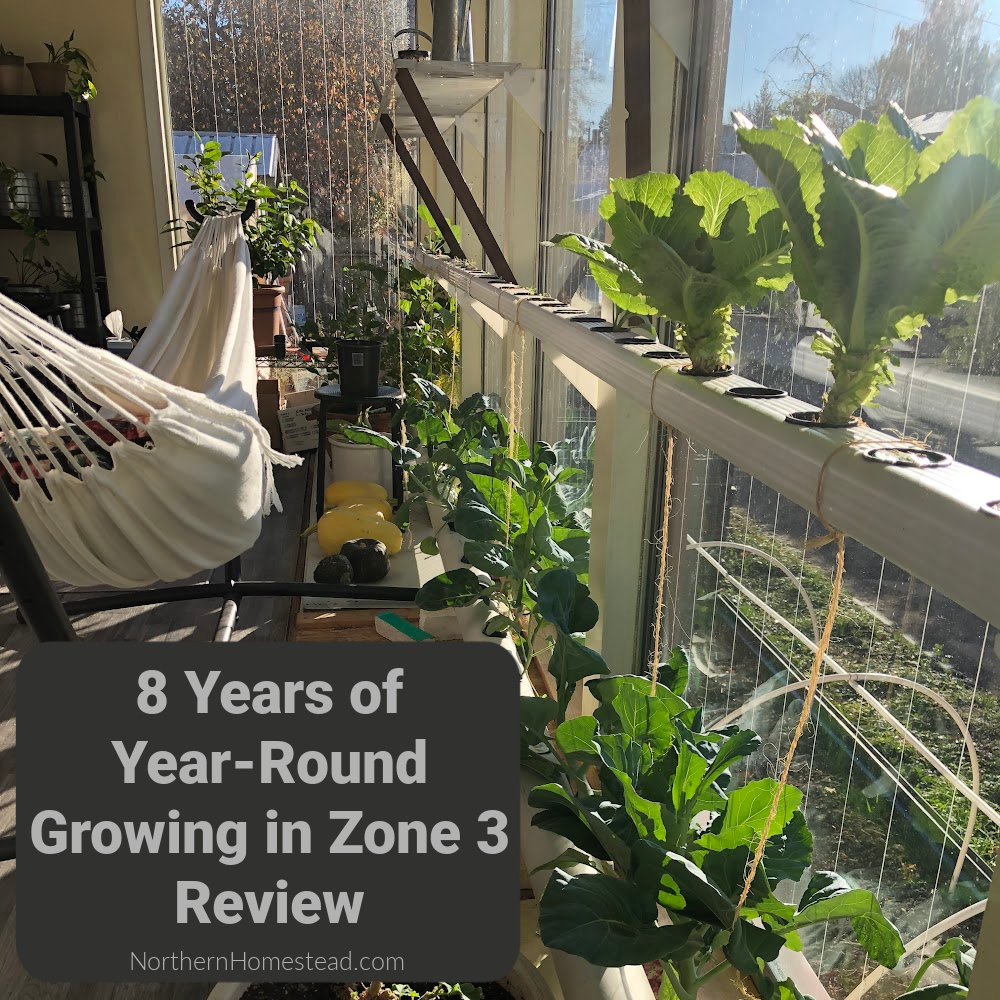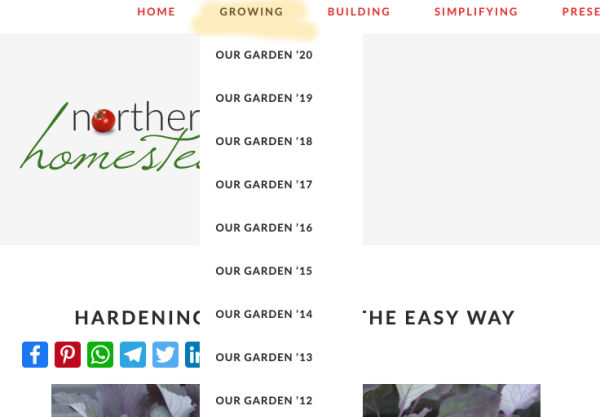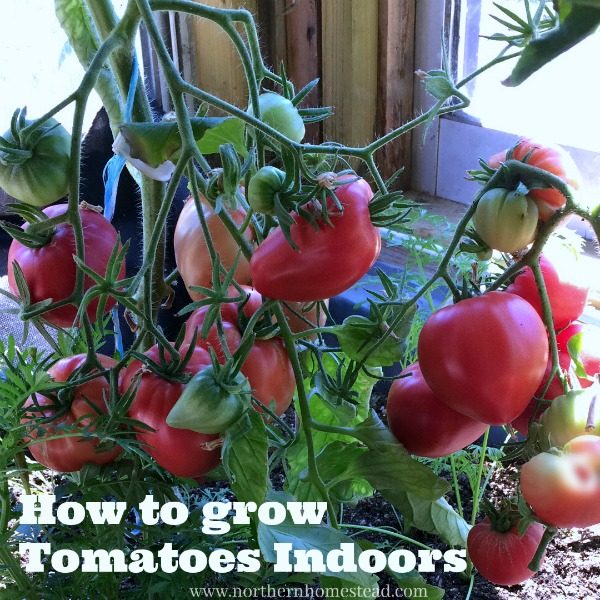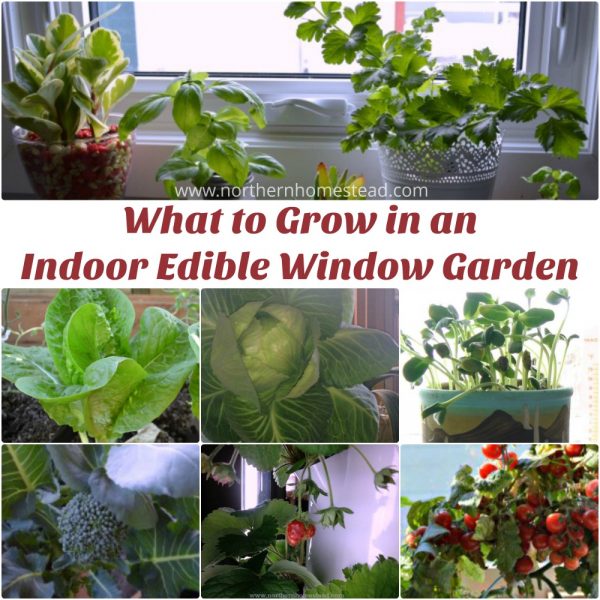
We started with growing a four-season garden before passive solar greenhouses for year-round growing became popular. Instead, we converted part of an old garage into a food production place and experimented with growing food year-round. Here is an honest 8 years of year-round growing in zone 3 review.
A bit of background information, we are in Alberta, Canada, hardiness zone 3, which means that outside temperature can go down to -40 degrees. We are 51 degrees parallel north, meaning our sun angle is low in winter, and we also have less than 10 hours of daylight from about mid-October to mid-February.
If you have not yet, read the Four Season Greenhouse/Growing Room Review first. A lot of what we write here will make more sense after reading it.
These reviews are not easy to write, but we want to be honest and helpful. Year-round growing and passive solar greenhouses have gained a lot of popularity, and we know from personal experience how much we want to make this work.
With these reviews, we want to encourage those who have already invested in a year-round growing greenhouse and are looking for tips on how to make it more efficient. However, we also want to be realistic and honest with those who are still considering investing in a passive solar greenhouse or year-round growing room.
Note, that all we write here is our personal experience and observations that we have gained over the last 8 years. It is possible that your experience is very different.
Last but not least, before we get started, I want to mention the “honeymoon” phase. Year-round growing in a cold climate is still very new, and the excitement about what is possible often overshadows the reality. It is a beautiful phase, and we personally have enjoyed it. However, for someone who is just looking for food security in challenging times, it might not be the right thing.
The beginnings of year-round growing
As soon as the windows were in and our growing bags ready, we planted heat-loving summer plants. Our first summer was quite successful. We struggled a bit with keeping the grow bags watered, growing in grow bags is a whole other subject.
As the summer season ended, we started our winter growing adventure in zone 3. Before that, we had already experimented with sprouts, herbs, and microgreens indoors. Since that worked great and was a great way to start, we wanted to see if more was possible.

In January 2015, we learned our first lesson about no growth during the cold and dark winter months. As you can see in the picture above, in two months, there was no growth worth talking about. That is also when we started to understand the difference between winter harvesting and winter growing. This is important, and we will discuss it further below.
We would have to start plants earlier to harvest anything edible during the winter. At this stage, we had no idea how early. Could we still grow heat-loving plants during the summer and then greens for winter? We had so much to learn.
A local greenhouse grower shared with us: “Sunshine makes the plants grow, and on cloudy days, they stand still.” Read more here. It wasn’t also just about dates, the weather played a role too.

When spring finally arrived, we had more greens than we could keep up with. Spinach, arugula, and microgreens planted partly in the fall and partly early in March grew and matured quickly.
We also finally had a place for seedlings that enjoyed the sunshine at the big windows. And we were ready for more adventures in our four-season growing room.

We documented everything, especially in the early years of our experience. You can find all the garden updates by clicking on “growing” at the top of this blog. All the years for our garden updates will come up. The four-season growing started in ’14.
Winter harvesting vs winter growing
Let’s talk about winter harvesting vs winter growing. Gardeners often confuse these two, and we have done it too.
Winter harvesting involves harvesting cold-hardy, fresh greens and vegetables from the garden or greenhouse that grew during the warmer months, are kept alive, and are waiting to be harvested during the winter months.
Plants for winter harvesting need to mature before the temperature and light conditions make it impossible to grow more. After that, they keep dormant for months. It’s a living refrigerator of some sort.
If you want to learn more about winter harvesting, here are some great books:
Inspired by great examples of winter harvesting, we wanted to be able to do that, too.
Soon, we learned that we also needed to start the plants for winter harvesting a lot earlier than we had first assumed. Growing a summer crop and, after that, a winter crop for winter harvesting does not work in our short growing season.

In our first winter garden update, we shared the hard fact that in two months we saw no growth in our indoor garden. At that point, we thought the problem was a lack of light, since all the winter harvesting examples we knew about were much more south, meaning longer daylight.
We still were confusing winter harvesting with winter growing. Puzzled why we were not able to harvest anything. The fact that plants did not grow was very noticeable to us.
It is possible that winter gardeners in milder climates farther south do not make such a clear-cut distinction between winter harvesting and winter growing. Plants will grow when conditions are right, and under less extreme conditions, some growth is always still happening. In our case, though, there was nothing worth talking about.
Winter harvesting is awesome if real estate for any given plant is cheap. For gardeners in zone 4 and colder, cold frames and simple hoop-house structures will not do it. We need a well-insulated structure (passive solar greenhouse) for winter harvesting. A well-insulated building is not exactly cheap, though.
We also learned that we would have to give up on summer crops, at least partially, to prepare plants for winter harvesting. However, if we could get new growth during the winter months, the same growing space would be more valuable.
We needed more light and heat for winter growth. You can read more about winter growing conditions in a greenhouse here.
The importance of the sun’s path
Speaking of light, the angle of the sun must be taken into account when building a passive solar greenhouse or growing room like ours. We covered that in our building review. The glazing angle and whether the roof is glazed will determine how much sunlight can come into the greenhouse/growing room at any given time of the year.
However, as growers, especially those farther away from the equator, we also want to consider the sun’s path. The farther away from the equator you are, the longer the path becomes during the summer months and consequently shorter during the winter.

Here is the sun’s path in our case. I made the above wheel during my Contour Map Generator training. We highly recommend it if you want to know more about your light conditions.
As you can see in the drawing I made, totally vertical south-facing glazing will catch the winter sun but only a small fraction of the summer sun. Since the summer sun is much higher in the sky, we would need rooftop glazing to implement it. On the other hand, the lower winter sun can only be captured by front glazing.
In other words, our building has only front glazing, which means we catch most of the winter sun and very little summer sunshine. Even if our roof were glazed, we would still lose many hours of sunlight because there is not enough glazing from the northeast and northwest.
Our growing season is very short, but we can catch up on that due to our long sun path, which means many hours of sunlight. We have many sun hours in the Summer; in our area, the longest day is 16:33 hours. However, a greenhouse or growing room that has glazing only facing south loses that sunlight in the early and late hours of the day.
Since we have a well-insulated greenhouse/growing room facing south, and also a geodesic dome greenhouse, that utilizes the whole sun’s path, we can see its impact on growth.

For example, we can grow tomatoes at both places. In the insulated greenhouse, we can start earlier and, if choosing indeterminate varieties, grow longer than we can in the plastic poly-covered dome greenhouse. However, with a lot more sun hours, we get a much higher harvest in the shorter time in the dome vs the greenhouse/grow room.
In the dome greenhouse, we usually end the season in late October but still have lots of green tomatoes to harvest that ripen indoors, and we enjoy them till the end of the year.

In the indoor garden, tomatoes are produced until the end of the year. Their blossoms set fruit before daylight hours are too short for them to continue. So, there is no real benefit to keeping the plants longer, even though I still do it most years.
Considering the building and running costs, growing in a geodesic dome is way more efficient during the summer months.
By design, a passive solar greenhouse does not follow the summer sun’s path. The goal is to have the least heat loss during the winter. Since our growing room has no glazing on the roof, we need less energy to heat it, but that also translates into less sunlight during the summer.
The sun’s path in winter is very short, with the shortest day lasting 7:54 hours. The sun’s angle is also very low, making winter the most challenging time of the year to grow anything.
To our knowledge, passive solar greenhouses originated in China; whole landscapes are covered with them. Most of China, however, is between 30 -45 latitude parallel north. That means that the Chinese deal with a very different sun’s angle and path.
How well a passive solar greenhouse will perform for you really depends on your location.
Challenges with growing in good soil
Before we discuss light further, let’s examine the growing medium. A growing room like ours, as well as any well-insulated space, is more like an indoor room than a garden. This is partially true for any greenhouse, but the more airtight a building is, the more challenging it becomes to keep living organic soil in it.
The problems might not occur in the first couple of years, but over time, the lack of a natural environment with rain, wind, and a healthy population of bugs (both good and bad) will deplete the soil.
In our case, the room has no access to the soil, so we have to bring in a growing medium to grow plants in.
As organic gardeners, we value growing in compost-rich soil. At first, we sew grow bags and fill them with Mel’s mix from the square-foot gardening book. This mix is great for square-foot gardening outdoors, but things are a bit different in an enclosed environment.
At first, we faced the challenge of keeping the soil moist. Grow bags dry out quickly, and being indoors, they dry out even more.

To help with watering, we built a wicking bed instead of the grow bags. That worked much better.
Organic soil is living soil. In an enclosed environment, the balance between good and bad bugs can quickly become out of control. In fact, it is best to keep the soil bug-free indoors. Sterilizing the soil is an option, and we recommend it for seed starting, but then it’s no longer organic soil.

There is also the notion that soil is free, or maybe just an assumption. That is not so. Even though we did the soil mix ourselves, it was still an investment. To keep that soil fertile, we would need either more nonorganic compost (to avoid bugs) or fertilizers.
Struggling with bugs and aphids we wanted to find a better way.
Water instead of soil

In our eagerness to find a way to grow food year-round, we came across the Aeroponic Tower Garden. Aeroponics is known for faster growth; the tower comes with grow lights—a win-win, so we thought.
We had never considered hydroponics and knew nothing about it until then. But since the tower garden came with everything we needed, it was an easy start. Read a review of the tower garden here.

We did not stop at one tower but added two more later. With the 3 Towers, we have grown lots of greens, tomatoes, and even cucumbers in our growing space.
That’s where we noticed that plants directed to the windows grew much better than those at the back of the tower garden with just grow lights. Could we grow without grow lights, after all? We had to find out.

We started experimenting with other hydroponic methods, such as the Kratky method, high-pressure aeroponics, and NFT Hydroponics. These new methods allowed us to use natural light alongside the windows instead of grow lights.
Grow light vs natural light

For the last couple of years, we have been growing mostly without grow lights, just using the sunshine we get during Alberta’s cold winters.
Growing without grow lights made winter growing much less costly. However, we are also more dependent on the weather. Remember the wise words of the experienced greenhouse grower: “Sunshine makes the plants grow, and on cloudy days, they stand still.”

Winter 21/22 was unusually overcast. Even though we have figured out the heating by now very well, the lack of light really showed a lack of growth. Plants that were planted in summer (early August) grew, but plants that were planted in the fall (late September), did not grow.
Supplementing with light during cloudy and short days is an option. At this point, though, we are done with grow lights. We wanted to see how much we could grow with less operational cost.
This brings us to the timing of when to plant the greenhouse in order to get the most out of it.
Planting and harvesting schedule
I wish we could give you an accurate schedule for planting and harvesting to get the most out of a four-season garden. But in eight years, we have not come up with a consistent schedule.
The angle and path of the sun are consistent. Since our room has no rooftop glazing, and the sun is high in the sky during the summer months, it receives the least sunshine from May to August.
Due to the sun’s path, there are less than 10 hours of daylight from about mid-October to mid-February.
If you do the math, we really only have about two months of ideal growing conditions in the fall and two months in the spring.
Adding glazing to the rooftop would make the summer months more efficient. However, as we have said before, it is not as efficient as a building that is open to the whole circle of the sun (a geodesic dome, for example). Having a well-insulated greenhouse for summer growing does not make much sense.
Adding grow lights in the winter would make winter growing more reliable, but at a higher cost.
There is one more small fact with a huge effect. Aphids and other bugs usually have a life cycle in which only eggs overwinter. This gives us a bug-free fall-winter season. Since the room is insulated, and in our case, heated, the eggs hatch as soon as the daylight gets longer.

Considering all of this, we have developed a more or less consistent schedule for starting the growing season in early August. Some of our favorite fall-winter plants to grow are romaine lettuce, kohlrabi, and Chinese kale. Over the years, we have also grown about anything we could think of in our growing room.
Starting some cucumbers in August also works well. They do not have a long lifespan and are done by the time the room temperature drops due to a lack of sunshine.

Starting new seedlings later works in some years, but since cucumbers are super sensitive to cold, they do not always make it. However, a picture of a dying plant doesn’t usually make it into social media. But eh, we wanted to be real in this review.
If we get a sunny winter, we can continue to plant and harvest all winter long. However, if it’s more overcast, plants do not grow. So we often end up with either too many greens or none.

By the time new seedlings for the summer garden join the room, the winter growing season is over. Again, this is very much dependent on the circumstances. Some years, we have so many aphids to deal with that cleaning out the old growth only makes sense. In other years, if plants are still healthy, we might continue well into spring.

In spring, the space is mainly dedicated to seedlings. We also like to bring the fig tree out of dormancy early and grow lemons and limes year-round.
For the last couple of years, we have stopped planting a summer garden. Whatever we could grow here between May and August grows much better outside or in the Geodesic Dome greenhouse.
Is it really worth it?
Every so often, the question arises: Is it really worth it? As you might have already guessed, if our food security depended on the four-season growing room, it would be a very unreliable source.

Over the years, we have shifted our focus from growing food year-round to growing an organic garden during the growing season and preserving as much as possible for the winter months.
We still grow some winter food because we can, but preserving food makes more sense to us. Our article about where our homegrown food comes from in the winter explains this.
All that being said, we enjoy having a year-round growing room. However, we do not have the pressure any longer to grow as much as we possibly can.

If we did not have a room like that, we would want to build one again as part of a house, shop, or garage. Any south-facing room can be converted into a growing space for seedlings and micro greens. Remember to add a chair to enjoy the sunshine.
We always want a greenhouse for food production. We love our geodesic dome, but a more straightforward structure that lets in all the mid-summer light would also work.
For people farther south with less extreme weather and light conditions, we would recommend a passive solar greenhouse. During good years with lots of sunshine, we can glimpse the benefits of having one.
Feel free to share your experience or questions about year-round food growing in a cold climate.
We invite you to subscribe and follow us on Facebook, Instagram, or Pinterest.

























Thank you for this article! I live in Alberta too and have tried year after year to figure out a way to grow food in the winter in my sunroom (room attached to my house). Every year is basically an epic fail and I thought it was me. Like you, I’ve tried the tower garden, grow bags, grow lights, hydroponics, etc and every year the aphids and whitefly win. And my lemon and lime trees didn’t make it this year. Sigh. It is so refreshing to hear an honest review of how hard it is to grow in the winter here. Thank you! I think you’re absolutely right that it makes more sense to focus on preserving in the summer months and only grow a few greens in the winter.
Happy to hear it encouraged you. We often think that success and failure are all on us. Truth is, it just is what is. If we can enjoy what works and let go of what does not, life becomes simple.
The tower garden is great for growing kale during the summer and freezing it for winter. Or peppers do well, too.